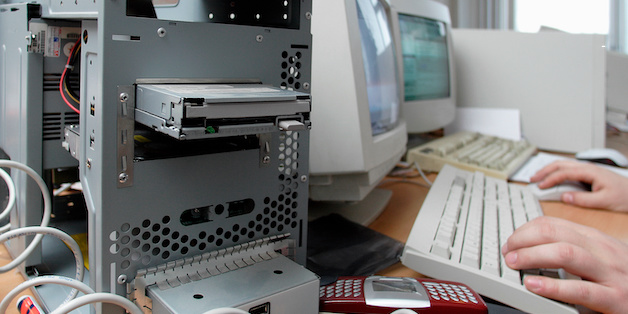
Technology advances so quickly it’s sometimes hard to keep up with the latest system or gadget. You’ve learned this if you’ve ever shopped for something new.
You do your research, hone in on a few preferences, and make an investment. Then, just as quickly, you find things missing and go on the hunt for an improvement.
This happens repeatedly as you grow. And it’s costing businesses a lot - the average enterprise spends 57 percent of its IT budget supporting legacy systems.
What is a legacy system?
How long have you been in business? What systems supported you in the beginning? How many of those systems are still operational?
Legacy systems are software, hardware systems, and programming languages that are functionally outdated and have been replaced by newer technology. They may have been state-of-the-art in their day, but now they are clunky, hard to work with, and filled with bugs and updates that may need to be fixed.
They are becoming ineffective quickly and may be holding you back.
But still, you move forward. Can you afford a major technological overhaul? Who has the time?
Why legacy systems are holding you back
Some legacy systems make it obvious their useful life is coming to an end - they march to an end date when they'll no longer be supported. Others quietly fade into the dark. In either circumstance, it’s important to remember that legacy systems have many risks:
- Inefficient - legacy systems are slow to load and lack user experience.
- Security - they are vulnerable to cybercriminal activity.
- Costly - they require ongoing maintenance, requiring extensive labor to keep it all running.
- Compliance - increased risks of not complying with rules and regulations.
- Mobility - have trouble functioning with remote working.
- Scalability - performance issues prevent future growth.
Modernization or replacement?
Many argue that updating a legacy system is the shortest route to advancement. But it’s not as simple as adding new hardware or software for improvement.
Instead, it’s time to carefully look at the infrastructure and create a longevity plan. Can the legacy system’s life be extended? Or is there a better solution? Cost is usually a deciding factor when teams push modernization, but several issues arise:
- Lack of skills - does your team or outside partnerships have the skills necessary to keep the legacy system operational?
- Lack of documentation - is adequate documentation still available for working with a legacy system and integrating newer technology?
- Cybersecurity issues - is the legacy system leaving you vulnerable to outside influences?
- Outdated architecture - is it challenging for developers to maintain and update the code?
There isn’t a right or wrong answer here. You’ll have to decide after weighing all of your options.
Sometimes, you can get everything you need from a completely new system. Other times, it makes sense to add functionality as you go. In either case, it’s best to start with a plan.
Clarify your purpose - what do you hope to accomplish? This often leads you to the best place to start.
From there, look back at your legacy system and assess what still works. Is it even possible to move forward with it? Can it meet your new requirements? Is it possible to make it work better in the future? Users are often your best resource and can help you decide what’s best.
Then, talk with an expert. We understand the intricacies of today’s medical facilities and how technology fits into the puzzle. We can help you create a cost-effective strategy for moving forward, building a system that enables you to get where you’re going.
Isn’t that the ultimate goal?
For IT Strategy, Cloud Conversion, or Help Desk Services reach out to us at Silver Linings Technology 360-450-4759.


